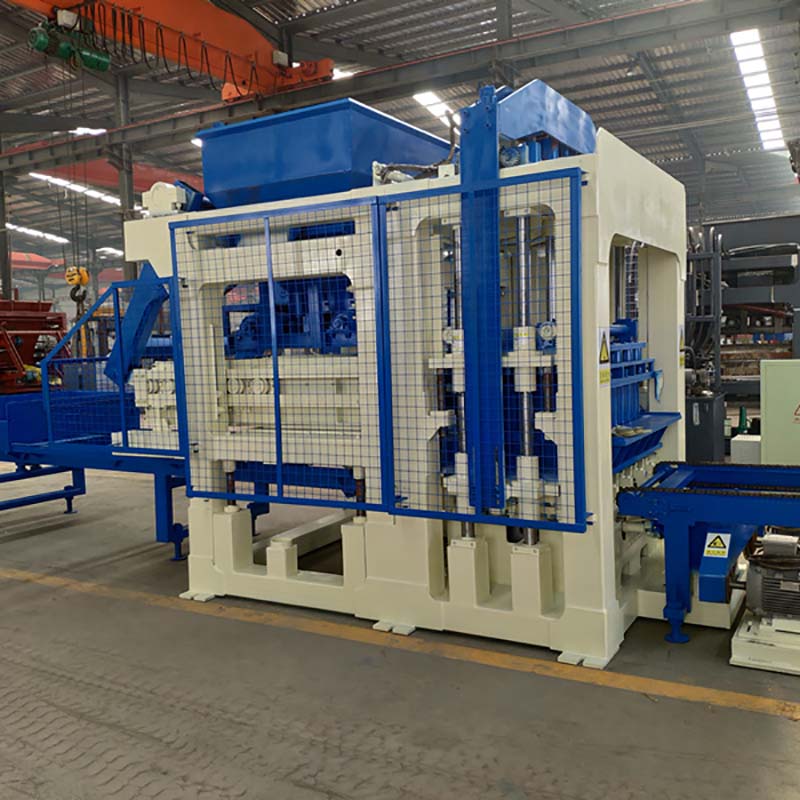
Image source:Aiwei block machine
Introduction
In recent years, there has been an increasing focus on sustainable and eco-friendly practices in the construction industry. Chinese brick making machine manufacturers have responded to this demand by incorporating recycled materials into their production processes. The use of recycled materials not only helps reduce environmental impact but also offers economic benefits and contributes to the circular economy. This article explores the use of recycled materials in Chinese brick making machines, discussing the types of materials used, their benefits, challenges, and future prospects.
Types of Recycled Materials in Chinese Brick Making Machines
Fly Ash:
Fly ash, a byproduct of coal combustion in power plants, is commonly used as a supplementary cementitious material in brick manufacturing. It replaces a portion of the cement content, reducing the demand for virgin materials. Fly ash improves the strength, durability, and thermal properties of bricks, making them an attractive sustainable alternative.
Slag:
Slag, a byproduct of the iron and steel industry, is another recycled material used in brick making machines. It can replace a portion of the clay content, reducing energy consumption and carbon emissions during the firing process. Slag-based bricks offer excellent strength, resistance to acid and alkali, and enhanced thermal insulation.
Recycled Aggregates:
Chinese brick making machines can incorporate recycled aggregates, such as crushed concrete, bricks, and ceramics, into the brick production process. These materials, obtained from construction and demolition waste, reduce the demand for natural aggregates and help divert waste from landfills. Recycled aggregate-based bricks exhibit good mechanical properties and can be used for various applications.
Plastic Waste:
Some Chinese brick making machines have been designed to utilize plastic waste, such as plastic bottles or bags, as a partial replacement for traditional materials. The plastic waste is shredded and mixed with other materials to create bricks with improved thermal insulation properties. This approach not only reduces plastic waste but also reduces the consumption of clay or other resources.
Benefits of Using Recycled Materials in Chinese Brick Making Machines
Environmental Benefits:
Incorporating recycled materials in brick production reduces the demand for virgin resources, conserves energy, and minimizes waste generation. It helps decrease greenhouse gas emissions, air pollution, and depletion of natural resources, leading to a lower environmental footprint.
Economic Advantages:
The use of recycled materials in brick making machines can offer economic benefits. It reduces the reliance on costly virgin materials, lowering production costs. Additionally, the utilization of recycled materials can attract environmentally conscious customers, opening up new market opportunities and enhancing brand reputation.
Enhanced Product Performance:
Bricks made with recycled materials often exhibit improved properties compared to traditional bricks. For instance, fly ash and slag-based bricks have higher compressive strength, reduced water absorption, and improved resistance to chemical attacks. This enhances the overall performance and durability of the bricks, making them suitable for various construction applications.
Circular Economy Contribution:
The integration of recycled materials in brick making machines promotes the principles of the circular economy. By utilizing waste materials as resources, it closes the loop, reduces waste generation, and contributes to a more sustainable and resource-efficient construction industry.
Challenges and Considerations
Quality Control:
The use of recycled materials introduces variability in the brick production process, requiring careful quality control measures. Chinese brick making machine manufacturers need to ensure consistent quality and adherence to relevant standards to maintain customer satisfaction and market competitiveness.
Material Availability and Consistency:
The availability and consistency of recycled materials can be a challenge. Chinese manufacturers need a reliable supply of recycled materials to maintain consistent production. Collaborations with recycling facilities or waste management companies can help secure a stable supply chain.
Technological Adaptation:
Incorporating recycled materials may require adjustments to brick making machine designs and manufacturing processes. Chinese manufacturers need to invest in research and development to optimize the machinery for efficient utilization of recycled materials and ensure the production of high-quality bricks.
Regulatory Compliance:
Compliance with regulations and standards regarding the use of recycled materials is essential. Chinese manufacturers must stay updated with local and international regulations to ensure the bricks produced with recycled materials meet the required specifications and safety standards.
Future Prospects and Opportunities
The use of recycled materials in Chinese brick making machines is expected to grow further due to several factors:
Government Initiatives:
Governments worldwide are promoting sustainable practices and implementing regulations to encourage the use of recycled materials. Chinese manufacturers can leverage these initiatives and align their production processes with sustainable development goals.
Technological Advancements:
Continued research and development efforts can lead to advancements in brick making machine technologies that facilitate the efficient utilization of recycled materials. This includes improvements in mixing, molding, and firing processes to achieve consistent quality and performance.
Market Demand:
Increasing awareness and demand for sustainable construction materials drive the market for bricks made with recycled materials. Chinese manufacturers can cater to environmentally conscious customers and differentiate themselves by offering eco-friendly and high-performance bricks.
Collaboration and Partnerships:
Collaborations between Chinese brick making machine manufacturers and recycling companies can strengthen the supply chain for recycled materials. Strategic partnerships can ensure a steady supply of consistent quality recycled materials and foster innovation in the field.
Conclusion
The incorporation of recycled materials in Chinese brick making machines represents a significant step toward sustainable and environmentally friendly construction practices. The use of materials such as fly ash, slag, recycled aggregates, and plastic waste offers numerous benefits, including reduced environmental impact, economic advantages, enhanced product performance, and contributions to the circular economy. Despite the challenges related to quality control, material availability, and regulatory compliance, the future prospects for using recycled materials in brick making machines are promising. Chinese manufacturers, with their expertise in technology and production capabilities, are well-positioned to drive further innovation and growth in this field, making significant contributions to sustainable construction practices globally.
